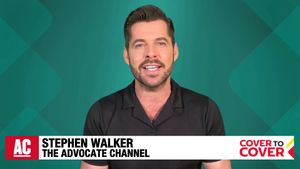Target State: Virginia
Electoral College Votes: 13?
Voted for Bush: 2000 and 2004 ?
Governor: Tim Kaine (D)?
State Senate: 21 Dem, 19 GOP?
State House: 44 Dem, 54 GOP, 2 Independents
In a state that
has not voted for a Democratic president since 1964
and where George W. Bush defeated John Kerry by a solid
eight percentage points in 2004, Sen. Barack Obama now
has a 10-point lead over Sen. John McCain, according
to a Rasmussen Reports poll released Monday.
"When
Barack Obama first started competing in Virginia, I assumed
the reason he was doing it was to distract John McCain
from other states," says Craig Brians, an
associate professor of political science at Virginia
Tech. "Not since the 1960s have Republicans even come
to Virginia, because they know how it's going
to turn out."
But red Virginia
has been donning shades of blue lately, electing its
second successive Democratic governor, Tim Kaine, in 2005,
and elevating Jim Webb to the U.S. Senate in 2006,
which enabled Democrats to clinch control of that
chamber. Additionally, former Democratic governor Mark
Warner is now about 25 points ahead in his race to
capture Virginia's other U.S. Senate seat, which is being
vacated by Republican John Warner (no relation to
Mark).
"What that
says about elections statewide to me is still not entirely
clear," Brians says. Though he isn't calling
Virginia for Obama yet, he does note some surprising
turns in the presidential race this cycle.
First, he points
to where the candidates have ventured -- or not, in some
cases. McCain has mainly campaigned just outside the
Beltway, in northern Virginia and near where the
military bases are in the Hampton area, while Gov.
Sarah Palin has stopped in Richmond.
Northern Virginia
is the state's fastest-growing region, accounting for
about a third of the state's population. That section
of the state has become heavily Democratic in its
voting, and it's the turf where most analysts
believe the race will be won or lost. Still, Brians says,
"if they're really competing for
Virginia as Republicans, they should be all over the
state, they should be everywhere here, and they're
really not."
Perhaps even more
noteworthy, Obama kicked off his Virginia campaign in
what's known as Southside, the bottom two
thirds of the state running along the North
Carolina border. The economy has tanked in the region,
and unemployment rates in at least two cities have settled
into double digits.
"Barack
Obama went there," marvels Brians. "Nobody
ever goes to those places, because if you're
from the government and you show up there, those
people are ticked off."
Brians admits
that he isn't sure whether Obama is really competing
for votes there or if the stop was more of a
"you are not forgotten" gesture, but
nonetheless, he says Obama has traveled outside of the
state's blue zones to penetrate other regions
of Virginia.
Another
innovation of the Obama camp has been the "blanket
approach" registration drive, which has
indiscriminately signed up scores of new voters across
the state.
"Usually,
you do kind of a sleeper campaign, a private
campaign," says Brians. "This has been a
huge public campaign with TV spots and radio
spots." He contrasts the strategy with that of
Bush's top strategist Karl Rove, who targeted a
couple specific counties in Ohio in 2004 in order
"to really drastically punch up Republican voter
turnout there."
Overall, Virginia
has registered a net gain of 436,000 voters, "the
largest surge in voter registration that Virginia has ever
experienced," according to a release from the
State Board of Elections. The state does not track
party affiliation, but nearly 40% of the newly registered
voters are younger than 25 and, regardless of age, females
represent the majority of new voters.
Brians calls
Obama's method "risky" because it's not
known exactly which way the voters who sign up will
vote or if they'll even make it to the polls.
But, he adds, "if it works, then this might turn out
to be a new model."
As with the rest
of the country, the economy is starting to dominate as
an issue over everything else.
While the
southern portion of the state has unusually high
unemployment, the northern part of Virginia with its
suburbs and exurbs boasts a 3.6% jobless rate,
according to the Virginia Employment Commission (5% is
considered "full employment"). Even though the
state rate of 4.6% in August was lower than the
national average, which hovers around 6.1%, it still
represents an 11-year high for the state, up from 3.2% the
previous August.
Brians says that
the news that Wachovia, which provides a lot of jobs in
the state, may make big staffing cuts has a lot of people
nervous.
While Virginia
has always prided itself on being a low-taxation state,
which would bode well for McCain's "no new taxes"
battle cry, Brians isn't sure how the economy
will figure into the state vote.
"If
unemployment is the concern, political science research
demonstrates that people are more likely to vote for
Democrats," he says. "If inflation is
the concern, then they're more likely to support
Republicans."
It's tough
to predict in a state where unemployment, education, and
income all vary wildly depending on the region.
"There are so many Virginias," says
Brians, "and Virginia as a state really
doesn't have an identity that it holds to
anymore."
Next up in the series: a look at how Equality
Virginia has managed to bring the blue out in a
traditionally red state.


















































































